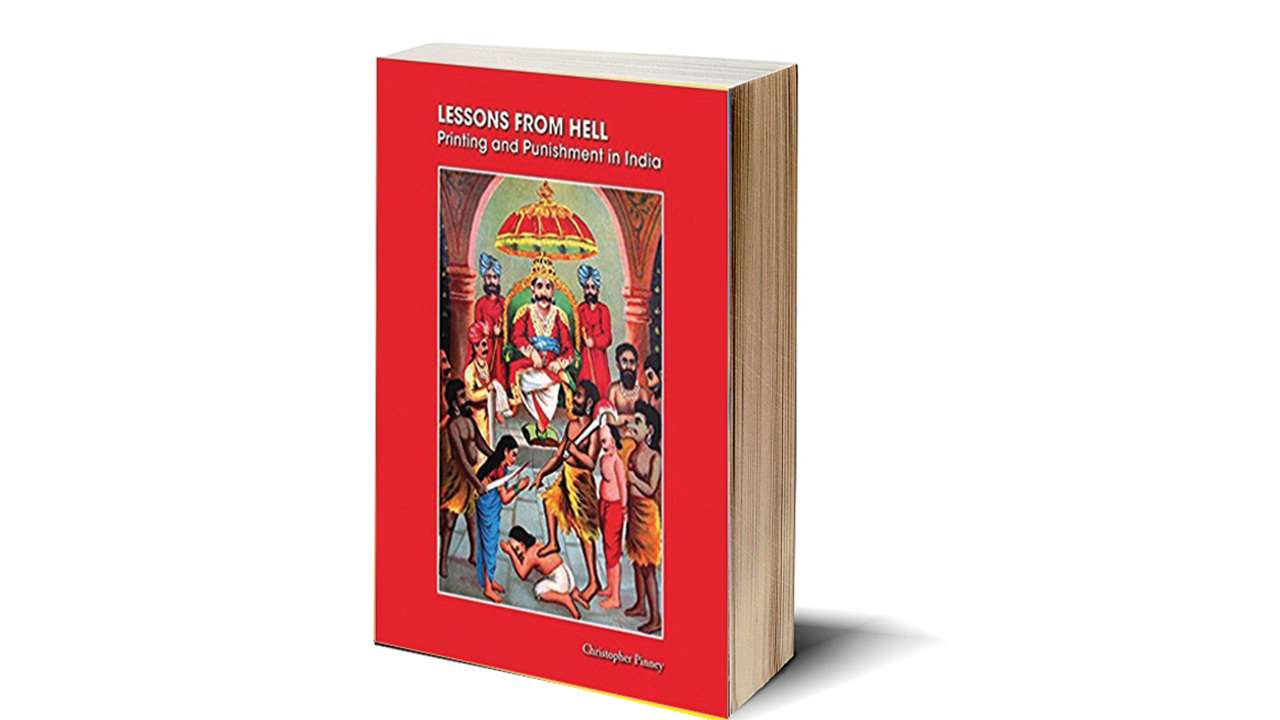
Book: LESSONS FROM HELL: PRINTING AND PUNISHMENT IN INDIA
Author: Christopher Pinney
Publisher: Marg
Pages: 135
Price: Rs 2800
This book was a revelation in many ways. To start with, one hadn't come across any karni-bharni prints – illustrations of hell showing the principle, 'As you sow, so shall you reap'. This despite the fact that Christopher Pinney, author of this book and several others on Indian popular visual culture, avers that the prints had, until as recently as the 1970s and 1980s, been quite widely circulated in rural and peri-urban India.
Two, Pinney's contention that it was because Raja Ravi Varma wanted to "wean the public from their ambivalent fascination with punishment and torture" depicted in the karni-bharni prints that, in 1892, he set up a lithographic printing press that would reproduce his paintings. It was this press that laid the foundation for Ravi Varma's popularity and that of his works, which to this day remain the templates for many of our popular prints of goddesses and heroines. Ironically, as Pinney shows, Ravi Varma's own presses later began churning out karni-bharni prints.
For all its sensational content, however, this is a scholarly and fairly densely written book. Much of it is taken up by an analysis of the various graphic elements, what they say about our culture and what it holds important. The karni-bharni prints, shows Pinney, are underpinned by a politics that seeks to reinforce a certain kind of behaviour deemed acceptable by the upper caste – sexual self-discipline, respect for generational authority, vegetarianism, patriarchy, etc.
The book was also a revelation of how elaborate and fantastic our imagination of the afterlife is, as seen in these prints, which drew inspiration from religious texts such as the Garuda Purana and the Bhagawat Purana. For instance, there are different hells for different actions – Kumbhipaka, where those who cook birds and animals alive are cooked in boiling oil; and Kalasutra, where those who bear malice towards their parents are sent to be suspended between a sheet of copper heated by fire from below and the Sun from above. And consider the exquisite cruelty of the punishments – ground in a pestle for stealing; attacked by snakes and scorpions for complaining; burnt alive and hit on the head with maces for eating bhog offered to gods, etc.
But for most readers, the main attraction of the book will be the prints, which are reproduced in large numbers. They have striking visuality, despite the somewhat crude production, evoking what scholars have termed "the exhilaration of dread" – bodies impaled on spears, eaten by monsters and animals, hung upside down, sawed into two, and so on.